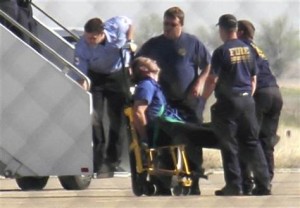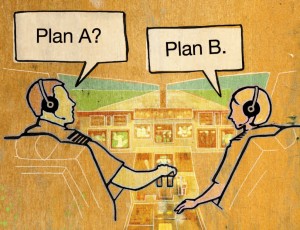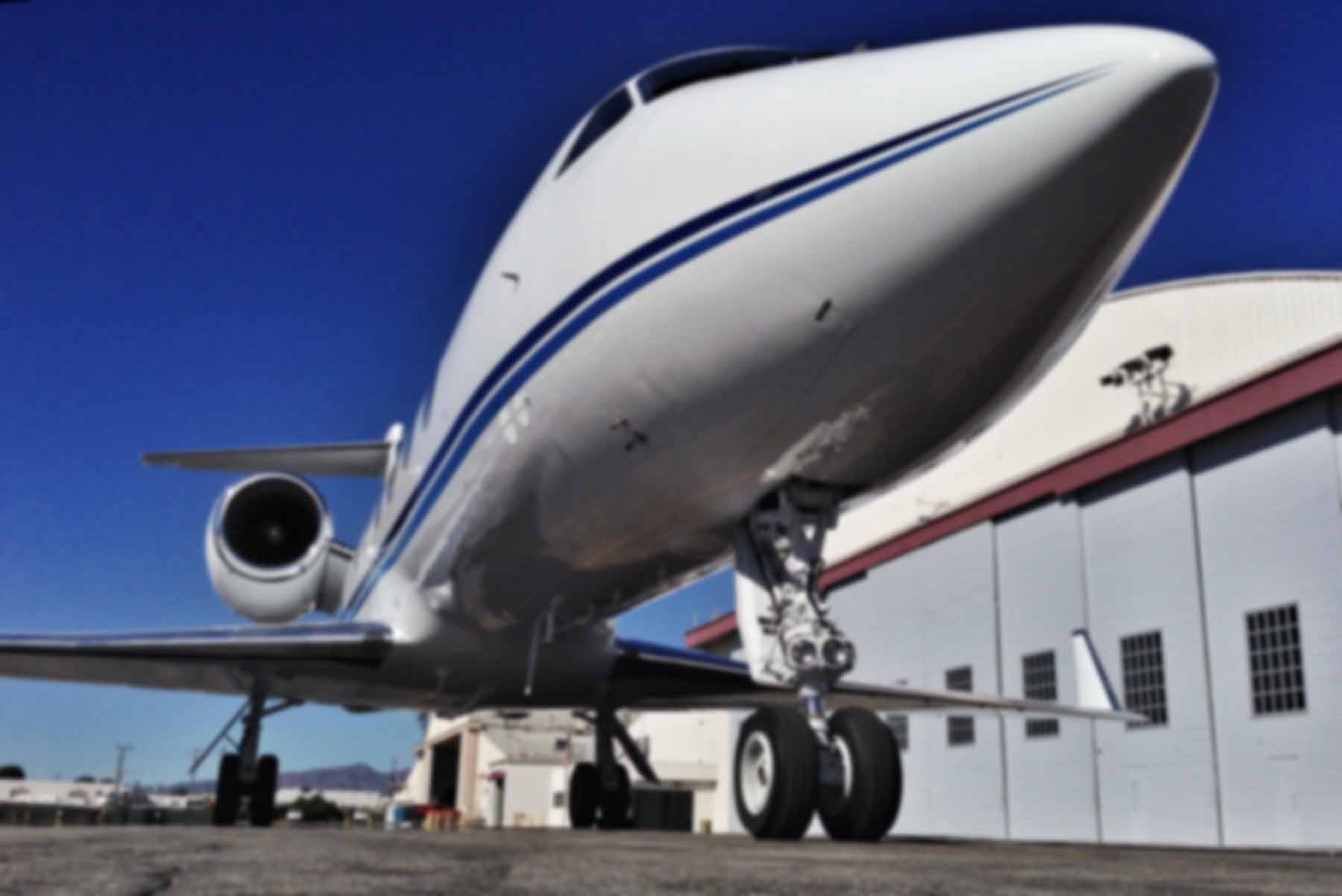Whether you love flying or hate it, you must admit the stories which emanate from the aviation industry often make for fascinating reading. From the ever-shrinking fortunes of domestic aircraft production to the Miracle on the Hudson, there’s always something intriguing in the news.
The big story over the past week has, of course, been the drama aboard JetBlue flight 191 while enroute from New York to Las Vegas. The captain, Clayton Osbon, apparently experienced some sort of mental breakdown during the flight and had to be physically restrained by passengers after unusual behavior and disturbing comments were made to fellow members of the flight crew. It has provided welcome fodder for some publications on what was an otherwise slow news week. Esquire went so far as to re-publish a 2007 piece in which the author claims that “all flights numbered 191 have gone down in flames”. (I hate to break it to them, but JetBlue’s flight 191 was — and is — a daily occurrence.)
The more I think about Flight 191, the more it seems that the interesting story here is that of the first officer, Jason Dowd. The captain going berserk? That’s pretty straightforward. Whether it was stress, mental illness, a bad drug interaction, or a combination of factors, pilots are still human and despite all attempts to “certify” them as 100% airworthy, circumstances can cause an aberration to slip through the cracks. The happy outcome in this case was due largely to key decisions made by the co-pilot. That’s where the story really gets interesting, because hindsight not withstanding, Mr. Dowd’s decision to lock out the captain and take over the aircraft must have been a difficult one.

For one thing, captains always command a certain respect even if they are personally disliked. They are typically more experienced (in type, at least) than their counterparts in the right seat. In Mr. Osbon’s case, he was not only a long-time captain for JetBlue but a highly-respected pilot by company managmenet as well. JetBlue had designated him as a “check airman” — a senior captain whose judgement and decision-making ability was sufficient to conduct flight tests and IOEs on other company pilots. In other words, in JetBlue’s estimation, Osbon was the least likely person to cause a problem.
Then there’s tradition. Since the earliest days of multi-pilot flying, the captain (or, in legal parlance, the Pilot-In-Command) has been legally responsible for and the ultimate legal authority aboard his or her aircraft. Other crew members have their jobs and certainly provide input, but at the end of the day it’s the captain’s ship. If two pilots have a legitimate difference of opinion, the PIC has the greater authority in the eyes of the company, the law, and the FAA. First officers know that, so outright sedition on the flight deck is extremely rare.

If anything, history has shown that the SIC (second-in-command) often doesn’t speak up when he should. NTSB archives are replete with stories of captains doing stupid things while the first officer remains mute. The worst accident in aviation history was a collision between two 747s caused, in part, by a captain’s impatience. The co-pilot felt something was wrong, but spoke too timidly to stop the impending crash which killed 583 people.
Co-pilots avoid direct confrontation with captains for other reasons as well. The first officer wants to become a captain someday, and a reputation of being combative and nitpicky is not necessarily conducive to that end, especially when paired with a senior pilot like Mr. Osbon. Obviously every first officer wants to strike the right balance between door mat and procedural Nazi, but that’s easier said than done. It’s not always clear how one is being perceived by the other guy. Interpersonal relationships on the flight deck are a world of greys, not black-and-white.
Besides, everywhere I’ve been privileged to fly as a captain, the company’s philosophy was that first officers were to be mentored by the PIC. That makes the captain a teacher, an educator worthy of high standing and not someone to be crossed without sufficient reason.
So okay, the first officer decides that despite the captain’s vaunted history and high position within the company, he’s no longer fit to act as Pilot-In-Command and must be replaced. Once you start down that road, you’re committed. And if the company or FAA later finds fault with your decision, you become the crazy one, the mutineer, the criminal. Even if Dowd was right, what if his decision was not backed up by popular opinion? The entire compliment of passengers and crew are on the other side of the door and not necessarily privy to the captain’s eccentricities. What if the passengers didn’t see the crazy side of Captain Osbon and instead declared Dowd the one who needed removal?
Even if Dowd was completely sure of himself and the necessity of his actions — as it sounds like he was — it could not have been an easy thing to leave behind the mantra of crew resource management and strike out on his own. For one thing, how do you go about it? The captain is sitting three feet from you. What if he hadn’t left the flight deck to use the lavatory? Do you physically remove him without any assistance? And if not, how do you get help? The cabin interphone is there in the cockpit, but so is the captain. I wonder if the first officer had a “Plan B” for that eventuality. Maybe step out of the cockpit himself for a moment and rally the flight attendants for help. Even that has risks, of course. Would it be wise to leave the cockpit even for a moment when the captain was in such a state? Meanwhile time is ticking by and Las Vegas gets 8 miles closer with every passing minute.

As I said, the co-pilot’s journey seems to be the interesting one here, especially since he made the right call and there’s much to be learned from the procedures and techniques he utilized for keeping the aircraft safe. As crazy as Captain Osbon may have been — and I think we’ve all seen the passenger video clips by now — his irrationality was fully offset by Jason Dowd’s level-headed and clear thinking application of outside-the-box CRM.
You might think that this scenario is covered by pilot training, but it ain’t necessarily so. I’ve never had the topic of a crew member going nuts broached in training, interviews, or even casual conversation with fellow aviators. Why would we? It’s so rare as to be virtually unheard of. Some airline interviews do include questions about disagreements the applicant may have experienced in the past with co-workers. Likewise, it’s common to be asked about hypothetical scenarios in which one is flying with a captain who exceeds a MDA or other limitation. But nothing on the scope of Flight 191’s events.
Human factors are far more complex than any aircraft system. Once again we see that not every contingency is covered by company manuals and procedures. At the end of the day, a considered and thoughtful aviator is still required in that seat to effect a positive outcome when the flight doesn’t go as planned.

And yet, Captain going batty like this is not the worst thing. Remember the Egyptian guy who crashed on purpose in 1992?
Indeed. If the first officer had not taken action — or had taken the wrong one (being locked out of the cockpit while trying to summon help, for example) — perhaps this JetBlue flight might have ended up the same way. Thankfully we’ll never know.
In my opinion, ron, the media and maybe even yourself have been really light on the guy. Reading the affidavit and the comments made by Osbon, I feel he clearly had an agenda…Again, my opinion, but that plane was going down.
Of course, the FAA should look more deeply into this and realize this. He might get a slap on the wrist or worse, drum it down to “mental disorder” Even if he never flies again.
I agree the Co Pilot had a VERY clear method. He made the right choices. I would also be a little bit freaked out if the captain told me “we arent going to vegas today” if I was the SIC
However, with that being said, you brought up the OTHER very important subject that I havent read or heard anyone talk about. And here is where I agree with you. the FAR line that reads ” the Captian has the legally responsible for and the ultimate legal authority aboard his or her aircraft.”
Here, is where Osbon might even have a defense if anything, and that he was restrained from his duties and thus, even the SIC was criminal (of course, thats just me trying to think like a defense attorney) but what you wrote about CRM and history…I very much agree. By the way, have you ever considered writing about CRM and the “grey” area in interpersonal relationships for Japanese Airlines or other countries with similiar hierachy levels of respect go way beyond anything in a corporate handbook?
I haven’t read the affidavit, but it seems to me that if Osbon really wanted to bring down the airplane, he could easily have done so by simply taking out of first officer.
From a legal defense standpoint, it is a bit odd that the head of the flight crew was charged with “interfering with the flight crew”. It’s akin to pressing charges against a failed suicide for “attempted first degree murder”.
I hadn’t thought about interpersonal relationships on the flight decks of foreign carriers much until lately. That can get to be a complicated situation with differing customs, languages, dialects, etc. I know quite a few American pilots are flying overseas for foreign airlines these days — the money can be excellent — so it would be fascinating to interview one of them.
I did have an instructor at Simuflite who’d spent most of his career flying over in “The Kingdom” (Saudi Arabia), and he had a seemingly endless supply of stories to tell about the hierarchy there. Mostly it convinced me that a) his wife was a saint, and b) I probably wouldn’t be happy in such a position.
I strongly Reccomend you read the affidavit as it has all the “official” communications and what was said by osbon. I guess the closest thing we would come to the black box for now. Its on CNN.COM. Check it out. You can see there he was “convincing” the F/O to go along with him in his attempt.
As for flying overseas. That is an ultimate fream for me. Wow, flying in UAE. Thats a whole other story….. Amazing.